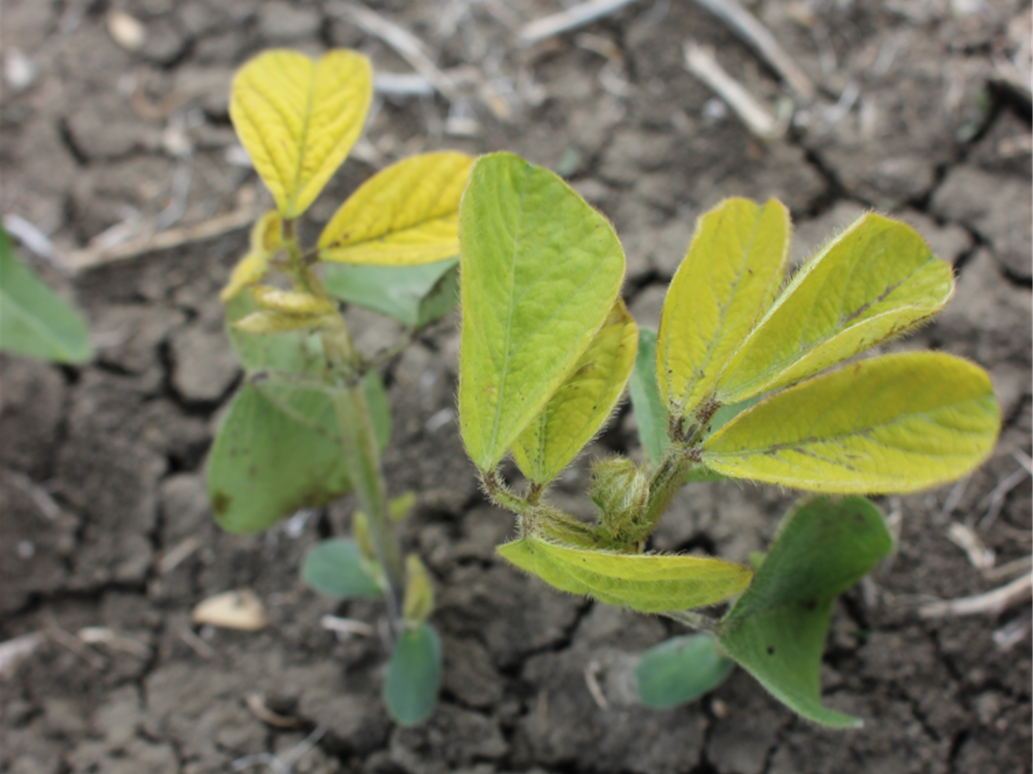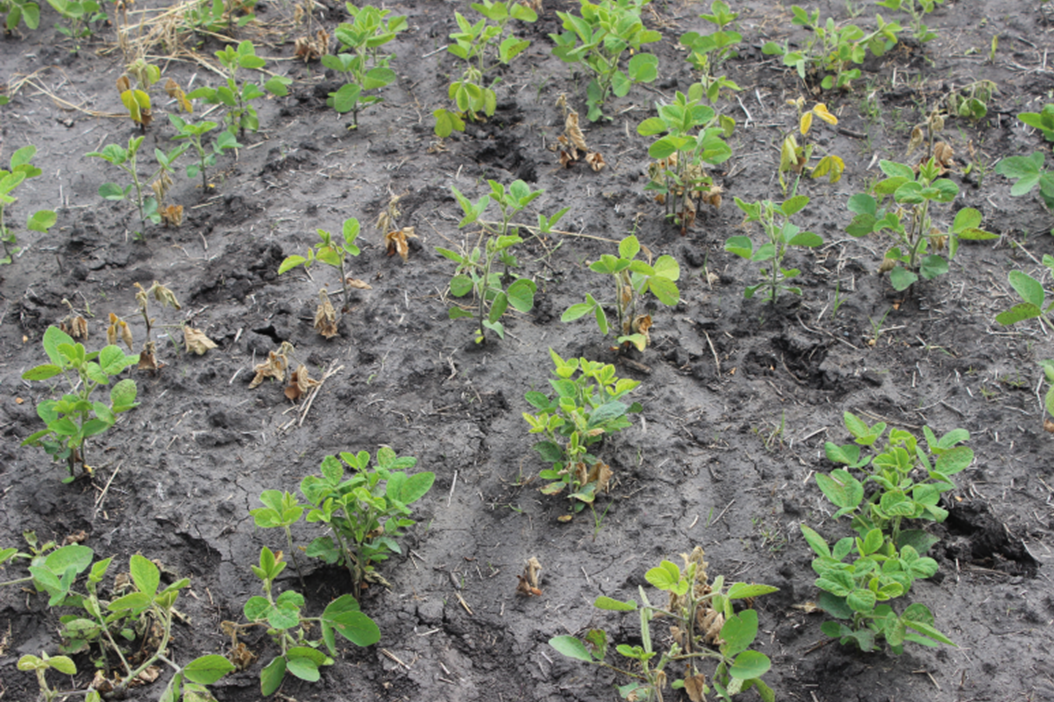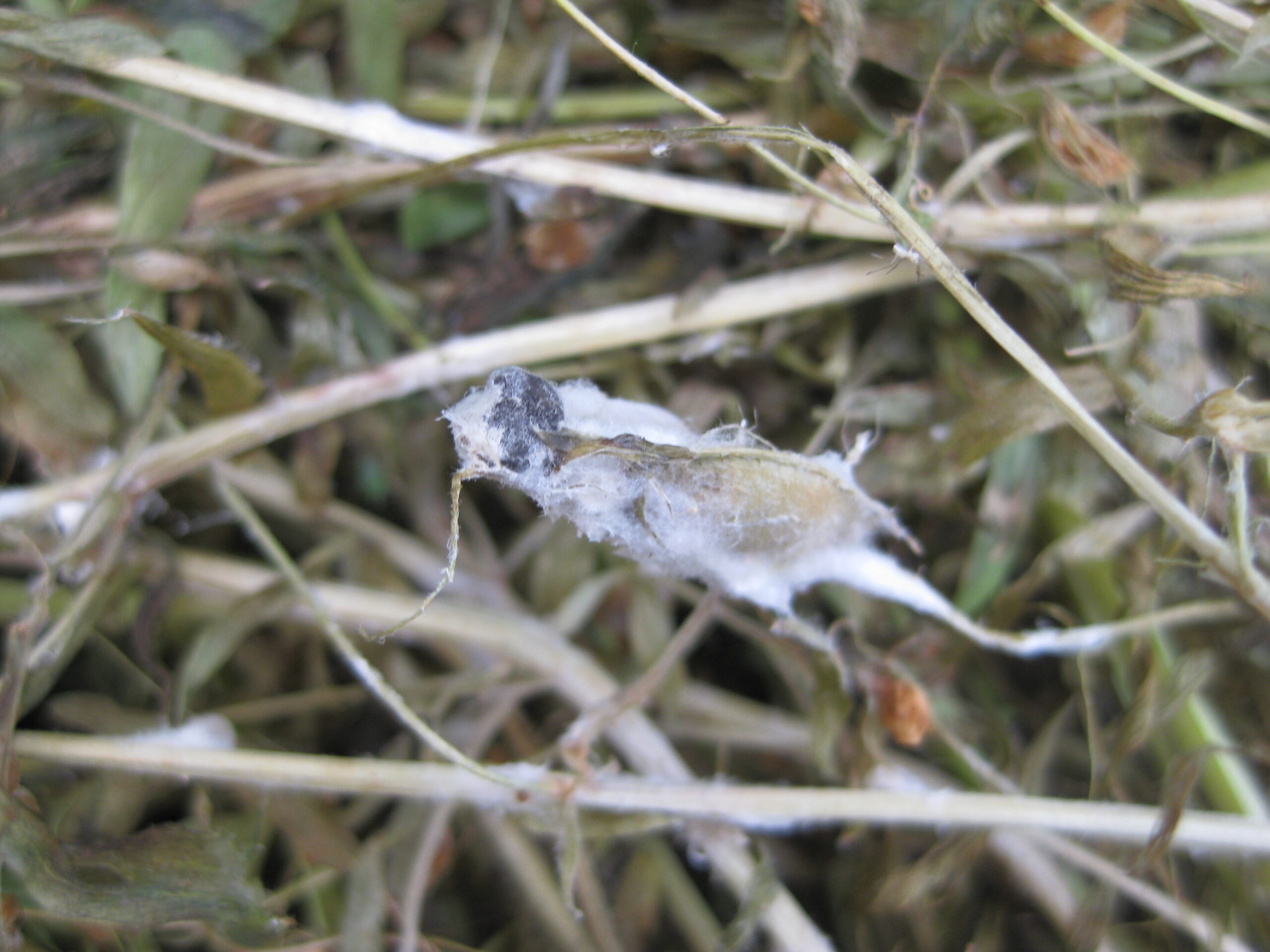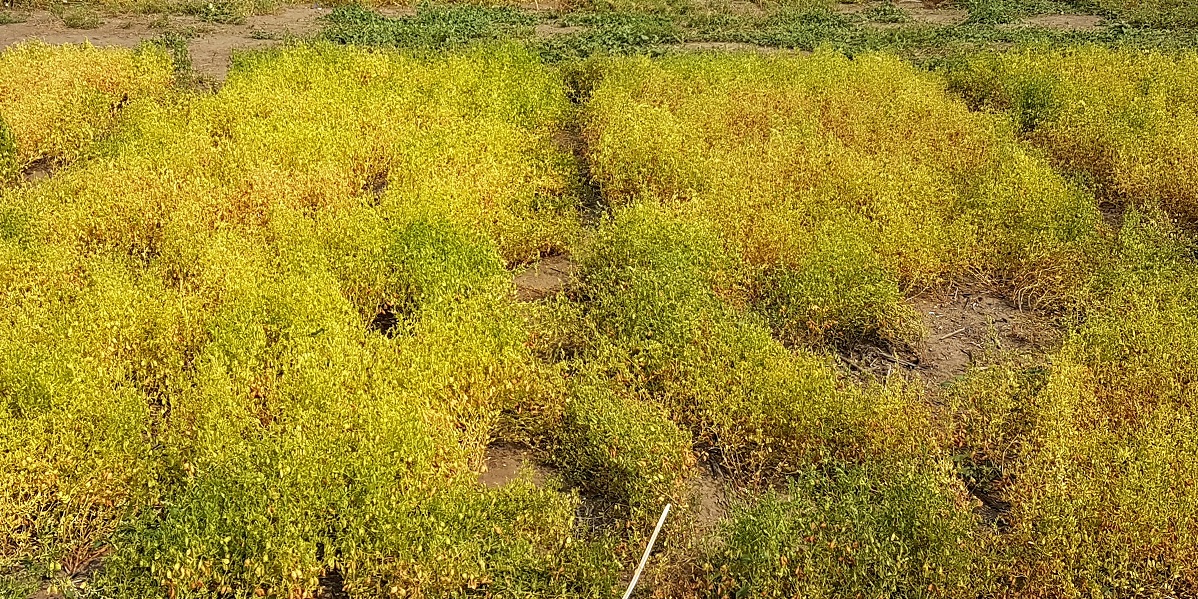By Bruce Barker, P.Ag.
Iron Deficiency Chlorosis (IDC) in soybeans is a problem for growers in many soybean areas of the United States, and is becoming common in Manitoba. In Saskatchewan, pulse specialists are seeing an increasing number of questions on identification and management of IDC.
In Manitoba, weekly crop reports have indicated some fields with IDC and the most recent crop report indicates that some fields are still showing signs of IDC, especially in saline areas.
IDC typically shows up between the first and third trifoliate stage when the plant is no longer able to mobilize iron. The primary symptom of iron deficiency is interveinal chlorosis – the development of a distinctive yellow leaf with a network of dark green veins. When severe, entire leaves turn yellow or white, and the outer edges may scorch and turn brown as plant cells die. It most often shows up in low spots and depressions where the soil is wetter and soluble salt concentration is higher.
Soil and Environmental Conditions

IDC frequently occurs on soils containing higher levels of soluble salts and calcium carbonates. These soils are generally poorly drained and higher in pH. The soils may contain adequate levels of iron, but chemical reactions in the soil due to the higher pH, soluble salts, and excess carbonates, reduce iron availability to the plant.
Iron is not soluble at high pH. Plants also require oxygen in the root zone to take up iron. When soils are wet, there is a build-up of carbon dioxide in the soil.
As carbon dioxide increases, so does bicarbonate, which neutralizes the acidity around the soybean root and reduces iron uptake. Factors such as wet soils, soil compaction, or excessive irrigation can result in lower oxygen levels that reduce iron uptake. High soil nitrate in the soil can also increase IDC. Growing soybeans on low-nitrogen soils may help reduce IDC. Companion crops can also help reduce soil nitrate levels.
No In-Crop Corrective Options

Photo: Manitoba Agriculture
When IDC is noticed in the field, no corrective actions such as foliar iron applications are effective. Dennis Lange, Industry Development Specialist-Pulses with Manitoba Agriculture, says that in many cases the soybean plant will outgrow the deficiency as warmer, drier weather allows the plants to take up iron from the soil. If the deficiency lasts into the fifth to sixth trifoliate, yield reductions may be seen.
A soil test for carbonate and soluble salts can be done with your fall or spring soil test. Manitoba Pulse and Soybean Association has produced a Soybean Fertility Fact Sheet that indicates different IDC risk levels based on the soil test.
If fields have a history of IDC, and the soil test indicates a moderate to high risk of IDC, growers should select a variety with a good (low) IDC rating. Manitoba Agriculture conducts IDC rating trials on soybean varieties listed in Seed Manitoba. These are independent trials conducted on land where IDC commonly occurs. Using this table will aid growers in choosing IDC tolerant varieties.
In North Dakota, research has found that a seed placement of an iron chelate product that has a majority of its iron in the ortho-ortho form can be effective. Other products and application methods have not been effective. Research there has found that one to three pounds per acre of dry product can improve yield on moderately or highly affected fields.
For Saskatchewan soybean growers, monitoring for IDC and understanding how management practices can impact iron uptake will help minimize the impact of the fertility issue. Where IDC impacts yields, future actions to improve field drainage, promote healthy stand establishment, reduce soil nitrogen levels, and selection of IDC tolerant varieties may help manage the problem.



